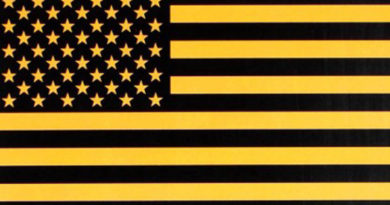Privatize the Schools: How a Free-Market Education System Would Work
In response to being exposed to the idea of a fully free society, many people have valid questions about certain aspects, including education.
The best way to begin examining an issue like this is to first look at the current state of affairs. So we begin with an analysis of government schools.
Government Schools
Government schools on average require $10,615 per year per student. Private schools require 7,770 dollars per year per student in elementary school and 13,030 dollars per year per student in high school. This averages out to about 9,523 dollars per year per student. Religious schools make up most private schools, and tend to be even cheaper. Catholic schools, for example, only cost about 5,200 per year per student K-12. This is also all in a highly regulated education market, so it should be noted that a 12 year education may not be found very efficient in a free market.
Let us also acknowledge that it is indeed cheaper to send a child to private school. One must ask how private schools can even compete with public alternatives which are free to coerce money from individuals to fund their institutions. After all, to send your child to a private school is to pay twice for their education.
How private schools compete
Part of the reason is to do with the very nature of using money that is not voluntarily paid for these schools. With no avenue for people to remove funds from public schools, there is no way to see whether consumers like the product being offered. This is the economic calculation problem that is present in all government programs.
Government schools were supposed to create an educated public, but the intelligence of the average American has been in decline. One reason for this is teachers unions. Public school teachers are required to join teachers unions, with disastrous consequences. Teachers unions have made it next to impossible to fire teachers, and have become a force to be reckoned with in the political sphere. Their prominence means that politicians will scarcely be elected who challenge the status quo. Anyone who wishes to cut the budget a dime or enact stricter standards for teachers will have a hard time getting votes.
The schools in liberal areas of the country such as Chicago have rooms for teachers who do no work to sit in and be paid. Does this sound like waste that would be tolerated in any capacity in a free market? Teachers unions are an instrumental piece of the catastrophic puzzle that allows this to happen. As Chase Rachels points out, were you to replace the word government with the word corporation today, and leave all else the same, people would be up in arms about the terrible corporate education system.
There are a few other components that allow for private competition in education. One of these is religion. In a society which has historically placed a high value on faith, many people seek to send their children to a school which can freely incorporate that. Religious schools may be somewhat more expensive due to the fact that many hold religious services which state regulations do not count as school time, meaning longer days or years. This is a silly regulation that no doubt hampers market growth. There is not much room for change, yet private schools survive.
An additional explanation for private competition is quality. It takes no genius to see that if a large amount of people are willing to pay double the requirement for education, they must believe the service is of a much higher quality. This is one lens through which to view the success of private schools.
Now that we have seen the disaster of state schools in a factual light, we can fairly speculate on what free market education may look like, keeping in mind the by no means perfect system of today.
The market for education
In a truly free market, diversity and specialization of schools would be encouraged. Where no regulations exist requiring 18 year olds to take coloring classes, specialized education can abound. If a student is STEM(Science Technology Engineering and Mathematics) inclined, they would not need to take business, communications or history classes more than they saw fit. Should a student have a knack for business, they may not take further than pre-algebra and basic biology. Students who are not sure what their aptitude is could take general studies for a year or two and refine their coursework based on that.
Should a student conclude that they desired to change their direction, they could easily take an extra year of high school, pursue it further in college or pick up some of what they missed using online sources. Enough information exists online today for a determined student to learn algebra II and even up to advanced calculus courses. Nothing is stopping a person from learning what they need in business online.
Schools today also attempt to prepare those who wish to pursue the highest academic achievements with those who seek very little education to prepare for their life. In short, very different students are in the same classrooms. Given choice, people who do not want a very exceptional education could go to a school with lower standards, and subsequently lower costs. People who wanted to earn up to a Ph.D or more could pay more to go to more academically distinguished schools.
School year length, lunch breaks, study halls, hours in a day, whether or not to take standardized tests, balance of lectures, notes and hands on activities, etc. are all things that can change from school to school. The competitive marketplace will provide that free people have choices between the most efficient and productive combinations of these variables
I know what you might be thinking that this is a lot of pressure to put on a child to ensure that they make the right choices that are presented to them if and when they are available and that for a parent the pressure of making sure those options are available to their child weighs very heavily on them from the moment they start thinking of kindergarten until the time they help their son or daughter choose what college to apply for. If you get the opportunity to send your child to a school that provides swimming lessons or guitar lessons, then take up that opportunity. Yes, ultimately you are going to need to find out what gear you might need, or you might have to spend some pennies on allowing your child to do the most extra-curricular activities as possible. If you’re lucky enough to live in LA there is a place that can help your child have the skills they will need to make the right choices for themselves throughout their life, I am referring to the Los Angeles Education Center for Children, they have developed activities tailored for young children that will enrich a childs critical and creative thinking skills which will benefit the child in many aspects of their life such as enhanced problem solving capabilities and improved social interactions and academic performance, it’s never too soon to help your child prepare for their future. /span>
With the freedom to choose between specialized schools with varying curriculum and standards with as little waste as possible, the education of each person could be more productive and fruitful than it could ever be in government schools.
Education for the poor
A vital concern among opponents of free market education is that only the very rich could afford schools.
In specialty schools with maximized efficiency and a higher rate of return when graduates take to the job market, education would be immensely cheaper and easier to pay off. This may not extend to the poorest of the poor, whom I believe could be accepted with scholarships or perhaps entirely free of charge to the religious schools mentioned above. Most charitable donations are given to religious institutions who carry out virtuous missions. Education of children is viewed as a very high priority in our society, and churches and charitable organizations would set up schools and scholarships to help ensure children can be educated. Companies in this society would also see it as beneficial to help educate youth in order to accumulate goodwill among consumers.
Schools which wished to get better test scores and send their graduates to more successful lives in order to increase their prestige would be incentivized to take in intelligent kids with less economic means. The interests of the educational institutions to take in smart kids to boost statistics as a marketing tool to allow for higher tuition from those who can afford it aligns the interests of the impoverished consumer and the educational institution.
This concept would drive poor children to study and become as smart as they can so as to be admitted into good schools at a discount or for free. Poor people, then, would be able to climb the ladder more easily and move up in society using their better education, for which they and their parents spent very little or no capital, as a tool.
A free education market would yield the best results for children and parents, as well as allow the poor to achieve great educations. People would get a better education at a lower price. In a free society, teachers are judged and evaluated on their merit, not whether they pay their union dues. Free the education market from the chains of centralized state authority.



